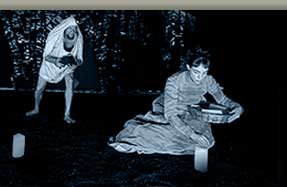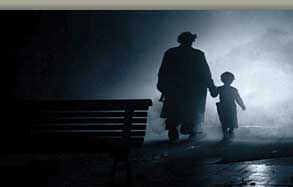





1.6 · FOUR VISIONS OF THEATRE: ANGÉLICA LIDDELL AND HER GENERATION
Por Ewelina Topolska
1. Women come on the scene
The generation of female Spanish playwrights and directors born in the 1960s was the first to reach widespread visibility and acclaim. Although women had long been admitted on the stage as actresses, the more “serious” occupations of a playwright or a theatre director until recently have been reserved as the domain largely of men. Those of the representatives of the second sex, employing Simone de Beauvoir’s term, who ventured into this male territory usually evoked little interest or experienced outright rejection. Such playwrights as Lidia Falcón (1931), Carmen Resino (1941) or Concha Romero (1945) had to fight not only against the common obstacles all theatre makers face, but also against the lack of social acceptance and understanding for the voice of women and their perspective.
The situation is very different for those born in the 1960s, who enter the profession in the early 90s. In Spain this is a time when the feminist movement is gaining momentum, raising the issue of female presence and equality of rights in many areas of public life, the domain of art included. Thus, the female playwrights and directors starting their careers within this time frame can, for the first time in history, work in (at least legally guaranteed) equality of conditions with their male colleagues and without the ideological constraints imposed previously by Franco’s dictatorship. And soon they prove what a woman whose shackles have been removed is capable of.
This paper is about four women of the 1960s generation who have secured themselves an indisputable position on the contemporary Spanish theatre scene and reached international recognition or, in one case, fame: Lluïsa Cunillé (1961), Laila Ripoll (1964), Angélica Liddell (1966) and Itziar Pascual (1967). It aims at presenting synthetically their achievements and pinpointing the characteristics of their art that make it unique, appealing, interesting - that turn it into a recognizable, unequivocal personal brand.
Being born around the same period perforce results in a number of shared experiences, and obviously some topics recur throughout the artistic production of many theatre makers of a given time stretch. In the case of the four playwrights mentioned above we can also find thematic coincidences –to give a few examples: Catholic religion (in Ripoll’s Atra Bilis and Saint Perpetua a tool of oppression and manipulation, in Liddell– an aesthetic tool), Civil War (many plays by Ripoll, Pascual’s Père Lachaise), the recent Balkan Wars, a topic for the most part absent from the scope of concern of younger generations that did not witness it firsthand (Ripoll’s Where the Forest Thickens, Liddell’s Belgrade), economic exploitation of the (so called) third world countries (Liddell’s The Year of Richard, Cunillé’s Après Moi, Le Déluge) or gender violence (Pascual’s Wall, Ripoll’s A Few Small Nips, Liddell’s The House of Force). However, what makes them all remarkable artists is the ability to find their own individual modus narrandi that has been captivating spectators for over twenty years, and the fighting unwaveringly for a place for their vision of theatre and society stemming from the deepest layers of their souls.
This article attempts to capture the qualities constituting this specific vision of each of the four creators, concentrating principally on the textual dimension of their work. Nevertherless, let us not forget that Ripoll and Liddell are as much acclaimed directors as they are playwrights, and the latter continues as an active performer in her own productions, as well as a poet and theoretician.
Of the four women whose work is examined in this paper, Liddell is the one who has achieved the most spectacular success. A theatre star of international standing, unlike Ripoll, Pascual and Cunnillé whose main area of operation is Spain, but similarly to other Spanish artists with whose art her own proposals have a lot in common –Fernando Arrabal and Rodrigo García (born in Argentina), at one point Liddell reached the decision to forego further efforts of securing decent working conditions in her homeland and moved her productions abroad. Finally, after five years of (at least partially) voluntary exile, in May 2018, Liddell, encouraged by Álex Rigola (Romo, 2018), came back to Madrid, bringing the house of Teatros del Canal down with her Trilogy of the Infinite (published 2016).
Still, although it must be admitted that Liddell’s art constitutes a rare and precious theatrical phenomenon on the European, or maybe even global level, hers, as well as, to a certain extent, Cunillé’s bleak vision of reality would be unbearable if not countered by the, albeit timid, faith in the potential of the human being for connectedness, care and love lying at the nucleus of Pascual’s, but also Ripoll’s dramaturgy.
![]()
Don Galán. Revista audiovisual de investigación teatral. | cdt@inaem.mecd.es | ISSN: 2174-713X | NIPO: 035160842
2018 Centro de Documentación Teatral. INAEM. Ministerio de Educación, Cultura y Deporte. Gobierno de España. | Diseño Web: Toma10
Inicio | Consejo de Redacción | Comité Científico | Normas de Publicación | Contacto | Enlaces